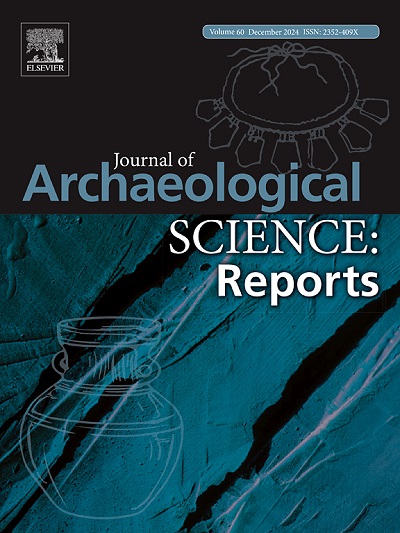拉波波特法则和北美13000年来文化多样性的生物地理学
IF 1.5
2区 历史学
0 ARCHAEOLOGY
引用次数: 0
摘要
人类学的一个中心目标是理解人类文化多样性的驱动因素,而考古记录为我们提供了最直接的经验窗口,让我们了解这种多样性随着时间的变化而变化。在这项研究中,我们通过分析双面点类型地理范围的时空变化来研究过去13000年来北美地区的文化多样性。我们证明,这种变化的大部分是由纬度梯度构成的,这些梯度的敏感性随着时间的推移而增加。我们认为,点类型的地理范围代表了从晚更新世到晚全新世人类适应纬度结构环境条件的文化技术沉积的累积考古特征。这些发现与拉波波特法则(Rapoport’s Rule)是一致的。拉波波特法则是一种被广泛观察到但仍有争议的生物地理模式,即物种的分布范围随着纬度的增加而增加。我们的研究结果也与越来越多的研究结果相一致,这些研究表明,人类生物和文化多样性的各个方面——如语言丰富性、经济发展和健康差异——在全球尺度上表现出类似的纬度梯度。我们探索了温度、能源可用性和环境生产力的行星尺度变化如何通过区域地球系统过滤,在北美文化进化史上形成了广泛的模式,反映了至少13000年人类对不断变化的生物物理景观的动态适应。本文章由计算机程序翻译,如有差异,请以英文原文为准。
Rapoport’s rule and the biogeography of cultural diversity across North America over 13,000 years
A central goal of anthropology is to understand the drivers of human cultural diversity, and the archaeological record offers our most direct empirical window into the dynamics of that diversity through time. In this study, we investigate cultural diversity across North America over the past 13,000 years by analyzing spatiotemporal variation in the geographic ranges of bifacial point types. We demonstrate that much of this variation is structured by latitudinal gradients, and that the sensitivity of these gradients increases over time. We argue that the geographic ranges of point types represent the accumulated archaeological signature of cultural technological deposition by human populations adapting to latitudinally structured environmental conditions from the late Pleistocene through the late Holocene. These findings are consistent with Rapoport’s Rule, a widely observed—but still debated—biogeographic pattern in which species’ range sizes tend to increase with latitude. Our results also align with a growing body of research showing that various dimensions of human biological and cultural diversity—such as linguistic richness, economic development, and health disparities—exhibit similar latitudinal gradients at global scales. We explore how planetary-scale variation in temperature, energy availability, and environmental productivity—filtered through regional Earth systems—has shaped broad patterns in North America’s cultural evolutionary history, reflecting at least 13,000 years of dynamic human adaptation to shifting biophysical landscapes.
求助全文
通过发布文献求助,成功后即可免费获取论文全文。
去求助
来源期刊

Journal of Archaeological Science-Reports
ARCHAEOLOGY-
CiteScore
3.10
自引率
12.50%
发文量
405
期刊介绍:
Journal of Archaeological Science: Reports is aimed at archaeologists and scientists engaged with the application of scientific techniques and methodologies to all areas of archaeology. The journal focuses on the results of the application of scientific methods to archaeological problems and debates. It will provide a forum for reviews and scientific debate of issues in scientific archaeology and their impact in the wider subject. Journal of Archaeological Science: Reports will publish papers of excellent archaeological science, with regional or wider interest. This will include case studies, reviews and short papers where an established scientific technique sheds light on archaeological questions and debates.
 求助内容:
求助内容: 应助结果提醒方式:
应助结果提醒方式:


